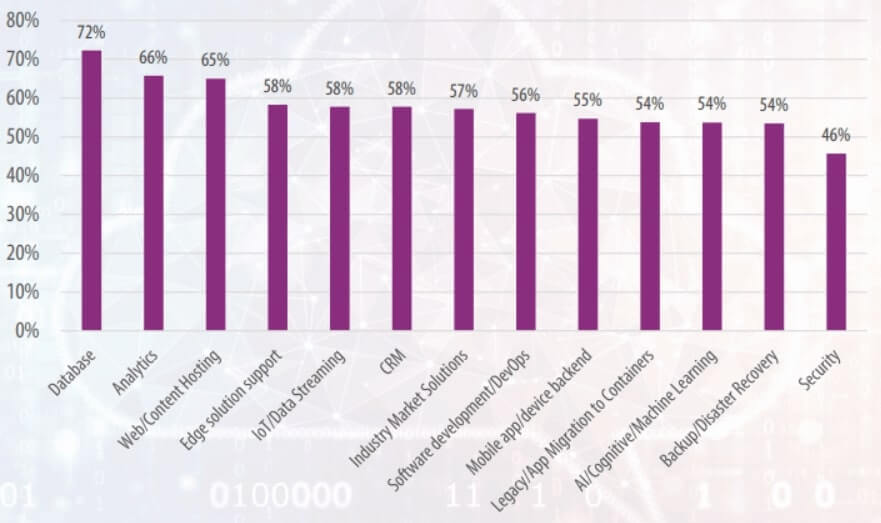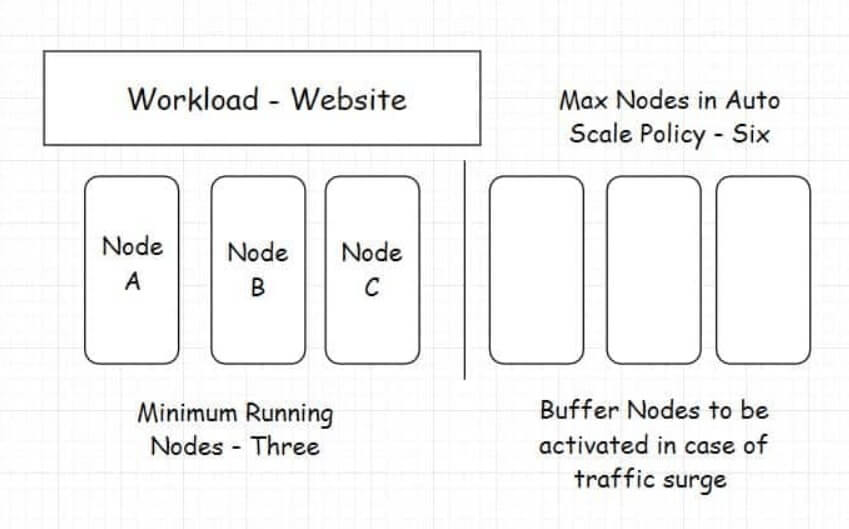Source: TECHnalysis Research
“For businesses and organizations relying more on data and technology, it’s critical to have cloud infrastructure in place or leverage cloud services that manage compute, storage, and networking effectively and efficiently,” said Steve McDowell of Moor Insights & Strategy.
The challenge lies in managing these disparate cloud services as a whole. A unified hybrid and multicloud environment might consist of multiple workloads that operate across a combination of public cloud and on-premise infrastructures. This is where organizations should look to vendors who deliver a complete cloud management strategy that spans storage, compute, and networking.
Types of Workloads in the Cloud
In order to decide whether workloads would be best-suited to private, public, or hybrid cloud environments, it’s necessary to classify them based on their architecture, resource needs, and usage patterns.
Cloud workloads can be categorized by resource needs as follows:
General compute: Workloads that don’t have specific computational needs and typically run on the default configuration of the cloud. These include common web apps, web servers, distributed data stores, and containerized microservices.
CPU-intensive: Workloads that have high compute requirements and handle a large number of concurrent users. These include massively multiplayer online games and deep learning applications that need to perform processor-intensive ops such as video encoding, analytics on big data, 3D modelling, etc.
Memory-intensive: Workloads that need memory and processing power to execute millions of transactions per second. These include real-time streaming data, caches, and distributed databases.
GPU-accelerated computing: Some workloads such as speech recognition, self-driven vehicles, navigation systems, computational fluid dynamics, seismic analysis, and so on have super-high processing requirements. These need the power of GPUs along with CPUs to perform real-time tasks.
Storage optimized: Workloads such as in-memory databases, highly scalable NoSQL databases, and data warehouses
More important are workloads based on their availability and the traffic they get. Cloud workloads can be classified by usage patterns as follows:
Static workloads: The resource requirements, demand, and uptime are fairly known. These include core enterprise services like CRM, ERP, and email.
Periodic workloads: These face traffic spikes at specific times of the day, week, month, or year. Examples include bill payment or tax and accounting tools. Serverless computing, where users don’t pay for ideal instances, is ideal for these workloads.
Unpredictable workloads: Popular applications and platforms like social networks, online multiplayer games, video streaming sites, etc. can see their traffic increase exponentially within no time. The auto-scaling ability of clouds can handle such spikes by dynamically adding instances as and when required.
“The importance of workloads will always vary based upon the context, like who’s being affected,” said Poitras. “However, from a business perspective, anything that hits the top line is definitely a higher priority vs. items of convenience.”
Weighing the Pros and Cons of Running Workloads in the Cloud
The cloud is extremely attractive for projects that need to be spun up quickly or those that have a limited life cycle, according to McDowell. “Moving them to the cloud delivers flexibility,” he said. “You can provision infrastructure, whether storage, compute, or networking, with the press of a button. Payment for public cloud services is based on usage, not capital investment.”
In addition to scalability, cloud environments also have the advantage of being highly distributed. This increases the efficiency of the workload.
“It doesn’t just sit on a server somewhere and crank along and do what it has to do,” said Hurwitz. “The workload may move into the platform or service that is best to execute at the right speed.”


















